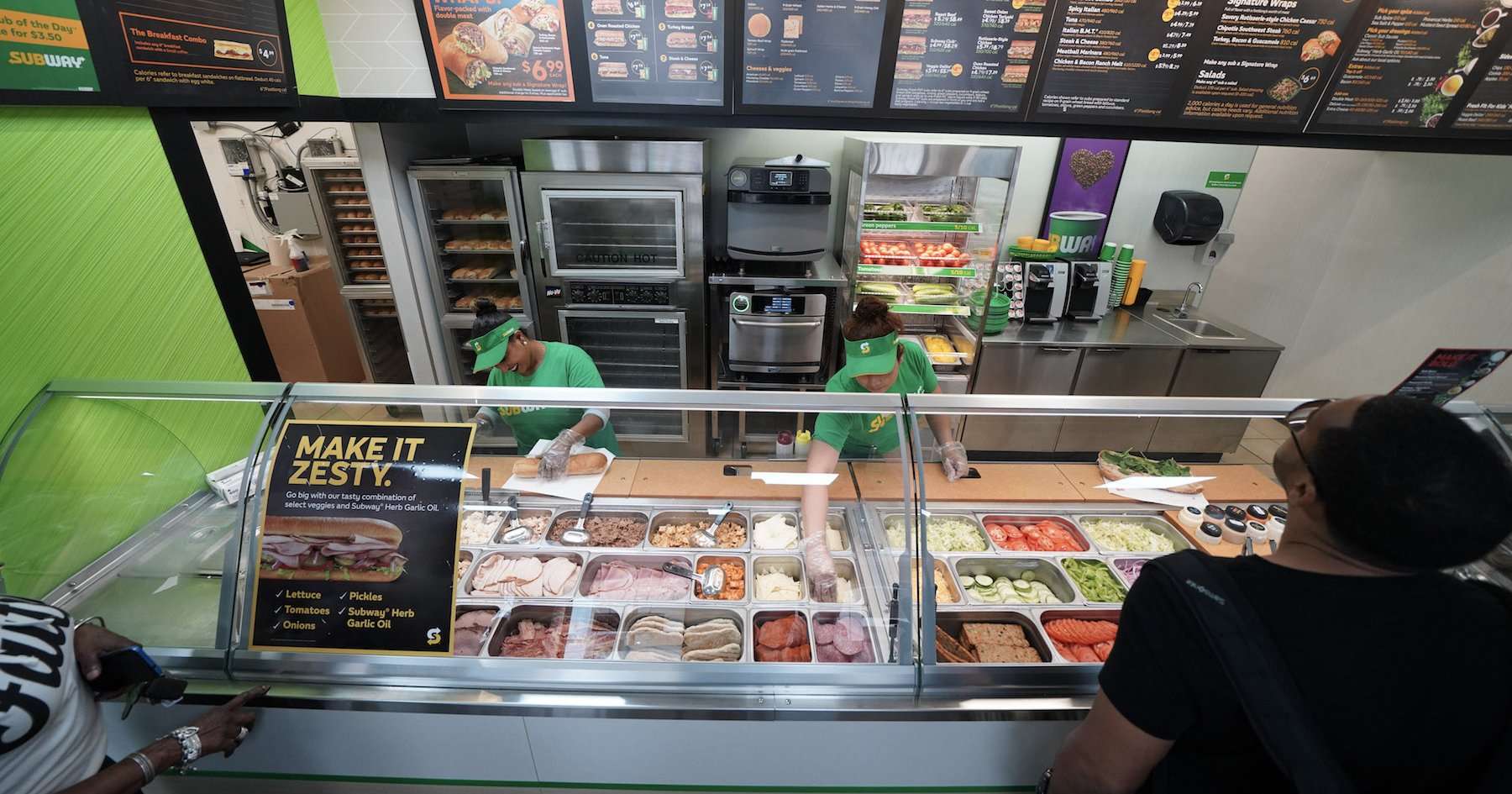Subway closed more than 1,100 locations last year as the company’s franchisees continued to shed locations amid consistently declining sales and traffic.
Subway has 24,798 restaurants in the U.S., the company said, or 1,110 fewer locations than it had a year ago. It’s the chain’s lowest number of locations since 2011, and the first time since then that it had fewer than 25,000 restaurants.
In a statement, a Subway spokesman said that the company and its operators have been focused on “smart growth and restaurant optimization—having the best locations to drive profitability.”
“As part of the optimization plan we shared last year, to achieve this goal some owners will close, relocate, or remodel their locations and that will result in slightly fewer, but more profitable restaurants,” the spokesman said.
The company’s franchisees, who own the restaurants, have been remodeling “hundreds of restaurants” across the country. Subway also introduced a loyalty program last year, Subway MyWay Rewards, as well remote ordering, third-party delivery and new menu items such as Ultimate Cheesy Garlic Bread and new wraps—all in a bid to generate sales.
Yet Subway’s unit-count reduction last year represents an acceleration in the rate of closures at the Milford, Conn.-based sandwich giant that began three years ago.
Subway closed 359 locations in 2016 and another 836 restaurants in 2017, following years of nearly unfettered growth that made the chain the most prolific restaurant in the U.S. and the world. Globally, Subway has 42,427 restaurants.
Since the closures began, the chain has shuttered 2,305 locations—or nearly 9% of the unit count it had during its peak in 2015.
The number of closures last year was far higher than executives had projected—former CEO Suzanne Greco had said the company expected 500 closures in the U.S. and the same number of relocations.
At the time, Greco said that franchisees would close some restaurants, while others would be relocated to more viable locations nearby.
Greco, however, retired in May and was replaced on an interim basis by Trevor Haynes, who remains the acting CEO.
The U.S. closures illustrate the challenge facing the company as it seeks Greco’s replacement—and replacements for other top managers. James Walker, vice president of North America, resigned last week. The company is also looking for a permanent chief marketing officer as well as a permanent CEO.
Many observers believe that whoever takes over Subway could face even more closures in the U.S. for the brand to move forward.
“As painful as it is for franchisees and the company, it is very much needed, and it needs to fall some more,” said John Gordon, a restaurant consultant out of San Diego. “The quality of some of the sites is beyond poor. And in dense areas you’ve got multiple Subways within very close range.”
Subway for years expanded aggressively throughout the country and kept on growing even as sales showed signs of weakness in 2012. The company’s domestic restaurant count grew by 28% between 2010 and 2015—a period that included the worst economic downturn in 80 years.
With so many locations, Subway has low average unit volumes—just more than $400,000 in 2017, according to Technomic Ignite data. That’s one of the lowest volumes among the largest restaurant chains.
That makes it tougher for individual operators to handle rising labor, rent, food and other costs.
“Any time you’re operating at less than $500,000 AUV, you’re risky,” Gordon said.
In recent years, Subway has dealt with some enormous setbacks, including the 2015 death of founder Fred DeLuca and, that same year, the shocking arrest of longtime spokesman Jared Fogle.
At the same time, however, the company had been struggling to evolve beyond the $5 footlong deal that helped it grow for so long. And it has faced mounting competition from smaller chains such as Jimmy John’s, Firehouse Subs and Jersey Mike’s.
On average, those three chains’ average unit volumes are 80% higher than Subway’s, based on data from Technomic.
Gordon said that low unit volumes followed by years of sales declines put stores at risk. “When you get higher labor costs and then rent, you’re cooked,” he said.

Jet-Streem on April 30th, 2019 at 05:19 UTC »
Ever since the $5 foot long they been stingy af with the meat and their ingredients just don't taste good. Used to eat there a lot. Now never.
wfang22 on April 30th, 2019 at 03:18 UTC »
Pretty sure “despite” is wrong. The larger the chain, the more chance to close individual stores.
northstardim on April 30th, 2019 at 02:55 UTC »
They placed far too many franchises too close to each other. A lesson Starbucks learned years ago. We have three Subways within 3 miles of each other on the same street.